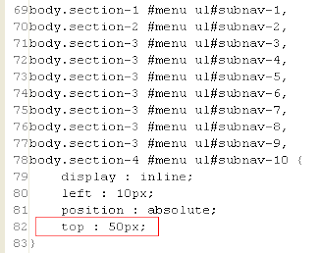We formed two teams to tackle some coding of the devcathlon system – Team User-Team and Team Matches-Scoreboard. I was on Team User-Team (A. Du, J. Ly, S. Sanchez, and me), this team does the coding and HTML layouts for user profile, user’s team profile, listing of teams in the system, listing of user’s teams, manage teams, invitations for joining a team.
So my job was to layout the User’s Teams and Teams in Devcathlon pages. Pages display teams, one is teams affiliate with the user, and the other is all teams in the system. So I created the layouts for both pages, what they should look like. The following images show the layout in the web browser.

I also added pagination to both pages, they are numbers of pages you can look at, a previous arrow to go back one page and a next arrow to go on. The pagination is a great idea if people want to go to Page #3 or Page #8 without looking at the pages in between. The pagination on the Team Browse Page is using the letters of the alphabet because that page display all teams in an A-Z manner.

I made around five to six to the main repository since March 18, 2009. I know it was not that much, I did not commit in the earlier part of the week because I was still implementing the wicket coding (http://wicket.apache.org/) for User’s Team and Team Browse Pages. The majority of my code were committed to two packages: the org.hackystat.ui.devcathlon.teams and org.hackystat.ui.devcathlon.teams.browse.

You can click on the following link to view issues/tasks that are assigned to me: http://code.google.com/p/hackystat-ui-devcathlon/issues/list?can=1&q=PhillipKHLau&colspec=ID+Type+Status+Component+Owner+Summary&x=owner&y=component&mode=grid&cells=tiles. Since March 18, 2009 to the date of this blog entry, I had for issues assigned to me. I complete two of the four issues; the other two issues were not required by this milestone.

My development time tracking sensor for Eclipse is not working properly, I did not notice until fellow team UT member, J. Ly, told me to check out my development time sensor because it is not displaying the amount of time I worked in Eclipse. After posting this blog, I will be reinstalling my Eclipse development time tracking sensor and test it to see if it is the case. I am pretty sure I put in a lot of hours for this week, especially over the weekend.
My team, Team UT, met on Wednesday (when we were in our newly formed groups) and on Friday, March 20, 2009. Those dates we did in-person meeting, met for one hour discussing about the layouts and API’s for getting user and team data. We did two online meeting on March 19 and March 22, 2009. The two online meeting was to for any questions and answers while we are working on our tasks. All the meetings were good because you get to know if everyone was on task and what not.




